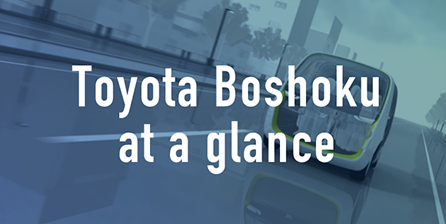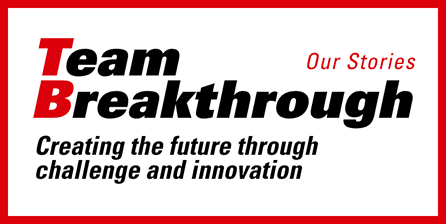Risk Management
Basic Stance
The Toyota Boshoku group is conducting risk assessments and working to comprehensively reinforce risk management, and reduce risks in order to respond swiftly to major risks including management risk, risk in daily operations, risk associated with disasters and accidents, risk arising from the external environment such as global warming and water, corruption-related risks (such as bribery, cartels (agreements upon bids, prices, allocating the supplier and any item to avoid competition among with competitors), embezzlement, and conflicts of interest), and social reputation risk.*
- Risk of losing societal trust
Risk Management Activities
Centered on the Chief Risk Officer (CRO), regions, the Corporate Operation unit and other functions are working together to continually implement a PDCA (plan-do-check-action) cycle for risk management, in order to counter the various risks affecting our business.
The Risk Management Promotion Meeting has been established within the Toyota Boshoku group to address business execution and continuity-related risk on a global basis, and convenes twice a year.
We are performing even more effective risk management activities, including monitoring the status of risk response by the Board of Directors.
The risk management system and associated activities

Evaluation points for materiality-impacting risks (Impact level)
By managing risks from the perspective of improving corporate value over the medium- to long-term, we are able to prevent risks before they occur.
| Materiality | Evaluation points |
|---|---|
|
Stable supply |
|
Product safety |
|
Environmental impact |
|
Occupational safety |
|
Compliance |
Response in the event of a crisis
Crisis levels
When a crisis occurs in the Toyota Boshoku group, the crisis level is determined according to the situation. We then appoint an appropriate chief of the disaster control headquarters, and set up a response system based on the crisis level.
| Level | Chief of the disaster control headquarters |
|---|---|
| Level A (Serious crisis) |
President (Comprehensive Countermeasures Headquarters) |
| Level B (Major crisis) |
Chief Officer or Segment Chief of the Segment to which the department and region with responsibility for said risk(s) belongs (Countermeasures project) |
| Level C (Individualized response crisis) |
Chief of department with responsibility for individual said risk(s), subsidiary company president (Countermeasures team) |
Crisis response system (in case of Crisis Level A)

Main Actions Taken against Priority Risks in Fiscal 2025
| Risk | Main actions taken in fiscal 2025 |
|---|---|
| Earthquakes |
|
| Cyberattack |
|
| Fraud damage |
|
| Falsification or concealment of quality/testing data |
|
Global Priority Risks in Fiscal 2026
Based on the results of the risk assessment for fiscal 2025, we selected global priority risks for fiscal 2026.
Risk map formulation process
Considering the risk environment surrounding the Toyota Boshoku group, CRO and others selected (drafted) the global priority risks based on:
(1) results of risk analysis and assessment by the department responsible for risk;
(2) risks considered important by external organizations, etc.; and
(3) information on crises that have emerged within the Toyota Boshoku group.
These global priority risks were then discussed and finalized by the Risk Management Promotion Meeting.
4 Global priority risks in fiscal 2026
- Earthquakes
- Fire and explosion
- Cyberattack
- Geoeconomic risk
FY2026 risk map

Education and training
To enhance understanding of risk management activities and risk sensitivity, risk management training has been provided since fiscal 2022 for risk management personnel in the departments responsible for risk and at affiliated companies (inside and outside Japan).
Initiatives to enhance risk sensitivity
In fiscal 2025, we conducted training to strengthen self-help skills in the event of a disaster, and to deepen knowledge of economic security, cyberattacks, and dark part-time jobs (known as “yami baito” in Japanese; part-time jobs that make those who are recruited unwittingly complicit in criminal activities).
In addition, we regularly issue a risk management newsletter to share various risk cases within the Toyota Boshoku group and alert our company members to its publication.
Business Continuity Management (BCM) Activities
We are promoting BCM activities to enhance the effectiveness of the Business Continuity Plan (BCP), and build mechanisms to realize continuous improvement in normal times. In addition, we are carrying out activities including periodic evacuation drills, drills for setting up a response headquarters, emergency communication drills using safety confirmation tools, and stockpiling supplies for local residents.
Confidentiality Management and Information Security
The Toyota Boshoku group considers the appropriate management of confidential information to be a key element of our business activities. We have both created a group-wide Information Security Policy and assembled a global confidential information management system. Additionally, we are working together as one group to systematically and continuously strengthen our information security.
In addition, once a year, the Company and its consolidated subsidiaries inside and outside Japan collaborate to inspect the status of information security initiatives using the security guidelines, thereby improving internal systems, rules, education, and technical measures to ensure the same level of security on a global basis. In addition to the establishment of systems, we believe in the importance of education, and regularly conduct activities to raise company members’ security awareness such as through e-Learning training and drills in targeted e-mail.
The security guidelines are based on ISO 27001/27002, NIST (the United States’ National Institute of Standards and Technology) Cybersecurity Framework, the Cybersecurity Management Guidelines of Japan’s Ministry of Economy, Trade and Industry, etc., and are periodically reviewed to ensure they are responsive to changes in the environment.
We also update our confidentiality management rules and related procedures, and have introduced an internal information leak detection system to counter the risk of confidential information leaks.
Particularly in recent years, we are focusing not only on in-house countermeasures, but also on close cooperation with group companies and suppliers to prevent weak spots emerging in any part of the supply chain. In order to counteract increasingly sophisticated and diverse cyberattacks, we are enhancing our specialized knowledge, and proactively providing explanations and proposals addressing the importance of confidentiality management and information security, along with specific countermeasures.
Also, we are working in unity with group companies and suppliers, aiming to further strengthen security measures.
Going forward, we will treat thorough protection of safety and security throughout the supply chain as a top priority issue, and aim to further advance by strengthening our activities each year.
Structure of activity promotion with consolidated subsidiaries

Specific confidentiality management actions undertaken
●Training of company members
1. Carrying out training for personnel in charge of confidentiality management / personnel responsible for confidentiality management in each Toyota Boshoku division (once a year)
2. Carrying out intra-division training using audio-based training materials posted on the intranet by personnel in charge of confidentiality management / personnel responsible for confidentiality management in each Toyota Boshoku division (once a year)
3. Carrying out various levels of training at Toyota Boshoku, including upon joining the company, upon receiving promotion, etc. (each training once a year)
4. Carrying out e-Learning training (once a year) and targeted e-mail drills (four times a year) for all company members in the Japan region, including officers
●Educational activities [Toyota Boshoku]
1. Posting information on the intranet, showing videos in cafeterias, displaying informational and caution-prompting message upon startup of personal-use PCs (twice a month)
2. Carrying out activities designed to improve awareness and understanding during Confidentiality Management Month* (October)
- Carrying out distribution of CHRO (Chief Human Resource Officer) messages, workplace self-inspections, workplace discussions, etc.
●Audits
1. On-site audits* by personnel in charge of confidentiality management at Toyota Boshoku (once a year)
- Compliance with confidentiality management rules are confirmed on a Genchi-Genbutsu (go, see & study) basis
●Strengthening Japanese affiliates
1. Toyota Boshoku visits affiliated companies in Japan to conduct on-site checks on the status of confidentiality management, identify any problems at each company and resolve them
●Provisions in line with our security guidelines
1. Systematic management planning (preparation of systems and rules, etc.)
2. Human resource management planning (training for company members, simulation training, etc.)
3. Technological management planning (improper system access/computer virus countermeasures, restoration measures, security surveillance, etc.)
4. Physical management planning (controlling access to relevant rooms/areas, etc.)
5. Preparation of response systems for accidents and hostile acts





